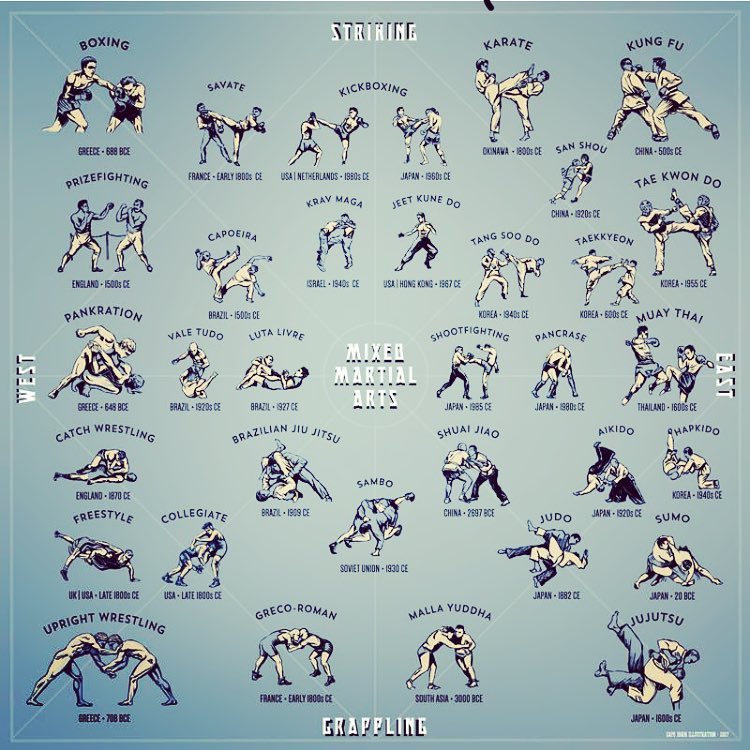Discover The Secrets Behind Martial Arts, Taekwondo, And A Lot More! Reveal The Covert World Of Fighting Styles Designs In This Utmost Overview
Discover The Secrets Behind Martial Arts, Taekwondo, And A Lot More! Reveal The Covert World Of Fighting Styles Designs In This Utmost Overview
Blog Article
Material Create By-Faber Bondesen
Are you tired of sensation overwhelmed by the large world of fighting styles? With a lot of designs to pick from, it can be easy to get shed in a sea of punches, kicks, and mystical names. But worry not!
This discussion will demystify the different martial arts styles, taking you on a trip from the effective strikes of Karate to the vibrant kicks of Taekwondo. Get ready to uncover the origins, methods, and philosophies behind these old art kinds.
So, tighten your belt and prepare to embark on an informing expedition into the captivating world of martial arts.
Beginnings of Martial Arts Styles
The origins of martial arts styles can be traced back to ancient worlds and their demand for protection and combat strategies. Throughout background, different societies developed their own distinct methods of fighting, each with its own set of methods and viewpoints.
In China, as an example, fighting styles styles such as Martial art and Tai Chi were created as a way of self-defense and boosting physical and mental well-being.
In visit the following web page , the samurai warriors created styles like Martial arts and Judo, concentrating on technique, accuracy, and mastery of the body.
In a similar way, in Korea, Taekwondo became a martial art emphasizing high kicks, quick activities, and psychological stamina.
These very early civilizations laid the foundation for the varied array of fighting styles styles that exist today, each with its own rich history and social significance.
Methods and Educating Methods
To master fighting styles designs, specialists must find out different techniques and training techniques.
Methods are the specific activities and activities made use of in combat, such as strikes, kicks, tosses, and obstructs. Different martial arts styles have their very own one-of-a-kind set of methods that practitioners need to understand through strenuous training.
Training approaches vary depending on the design, however they usually entail a combination of physical fitness, drills, competing, and kinds.
Physical conditioning is critical to build strength, flexibility, and endurance. Drills help professionals refine their strategies and improve their speed and precision.
Competing permits practitioners to practice their techniques in a regulated, sensible atmosphere. Forms, likewise known as kata, are prearranged sequences of movements that help experts create muscle mass memory and emphasis.
Philosophies and Principles
Checking out the ideologies and concepts of martial arts designs can provide you with a much deeper understanding of your picked self-control. Each fighting style has its own special ideology and set of directing concepts that shape the method it's exercised.
For instance, Karate stresses self-control, regard, and self-control. It educates experts to focus their body and minds, allowing them to safeguard themselves while maintaining a sense of internal tranquility.
On the other hand, Taekwondo places a strong emphasis on rate, dexterity, and flexibility. Its principles are rooted in the tenets of courtesy, honesty, determination, self-constraint, and indomitable spirit.
Read the Full Guide
Since you've discovered the beginnings, methods, and approaches of numerous fighting styles styles, you have a deeper understanding of these ancient techniques.
Envision a young karate pupil, practicing with steady decision and emphasis, appearing boards with an effective strike.
Their trip showcases the dedication and stamina called for to grasp a fighting style, advising us that with discipline and perseverance, anything is feasible.
